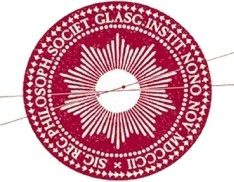Overview
The Glasgow Foundry Boys Religious Society was instituted in 1865, two years before the founding of the Wellington Palace Branch. According to the ‘Plan of Tea Tables and Names of Branches’ in the 1900 ‘Souvenir Programme’ for the annual social dinner, there were (at least) 25 branches of the Glasgow Foundry Boys’ Religious Society in the city at that time. They were as follows:
Anderston Hall; St James’ Hall; City Hall; Rutherglen; Renwick Hall; Gordon Hall; Clyde Street Port Dundas; Victoria Hall; Christian Institute; Spoutmouth; St Andrew’s; Crossmyloof; Blackfriars; Possilpark; Church Branch; Portman Street; National Halls; St George’s; Finnieston Street; Osborne Halls; Cathcart; Lorne Hall; Shettleston; Church Place; and Doncaster Street.
It is currently unknown if there were also 25 literary societies attached to those groups.
The Glasgow Post Office directories for the early years of the twentieth century show that the Glasgow Foundry Boys Religious Society was a huge organisation whose quickly growing membership only began to decline at the start First World War. In 1902, it had on its rolls ‘16,861 lads and girls, and 1848 voluntary workers’ (‘Glasgow Foundry Boys’ Religious Society’, ‘Religious and Moral Institutions’, Post Office Glasgow Directory for 1902-1903… (Glasgow: Aird & Coghill, 1902), p. 151). The number of young men and women members rose to almost 18,000 in 1906, but by 1914, it had ‘14,652 lads and girls, and 1561 voluntary workers […] [with] 83 branches in the city and suburbs’ (‘Glasgow Foundry Boys Religious Society’, ‘Institutions’, Post Office Glasgow Directory for 1914-1915… (Glasgow: Aird & Coghill, 1914), p. 1793).
Wellington Palace was a public hall located at 11 Commercial Road, just south of the River Clyde (it would later be used as a music hall, and even later as a cinema; see ‘Wellington Palace‘ on the Scottish Cinemas and Theatres Project website). The information on the Wellington Palace Branch comes primarily from the society magazine, The Foundry Boy (see ‘Additional Notes’ below), which was written and produced by the members.
Date of Existence
1867-1914?
Source of Information
1. ‘Glasgow Foundry Boy’s Religious Society’, Glasgow Herald, 21 July 1866, p. 6;
2. ‘Glasgow Foundry Boys’ Religious Society — Hallow E’en Gathering’, Glasgow Herald, 3 November 1866, p. 2;
3. Glasgow Foundry Boys’ Religious Society, Scripture text book, 1870-1876 (Glasgow: [The Society], [1876?]) (MLSC, Mitchell (GC), 206 437839);
4. Annual Report, Glasgow Foundry Boys’ Religious Society (Glasgow: [The Society], 1880) (MLSC, Mitchell (GC), 206 46801);
5. Glasgow Foundry Boys’ Religious Society, The Foundry Boy, the Monthly Magazine of the Wellington Palace Branch (January-December 1886) (Glasgow: [The Society], 1886) (MLSC, Mitchell (GC) 206 98783);
6. ‘Souvenir Programme’ for Glasgow Foundry Boys Religious Society Annual Conversazione of Workers and Friends. In the City Hall, Enter By Albion Street, On Thursday Evening, 15th Nov., 1900′ (MLSC, Glasgow Scrapbooks, No. 23, p. 212);
7. (Newspaper clipping on annual social meeting of the office-bearers and monitors) (MLSC, Young’s Scrapbooks, No. 9, p. 150-51);
8. (Numerous articles in Glasgow Herald on this and its parent society, see the British Newspaper Archive)
Repository
Mitchell Library (Glasgow Herald)
Mitchell Library Special Collections (MLSC)
National Library of Scotland (Glasgow Herald)
Reference Number
(See Source of Information)
Additional Notes
The Glasgow Herald is available at the Mitchell Library and the National Library of Scotland in both hard copy and microfilm (check libraries for availability in both formats). Digitised issues are also available through the British Newspaper Archive: https://www.britishnewspaperarchive.co.uk/
See also entry for The Foundry Boy on our sister website, Literary Bonds.
